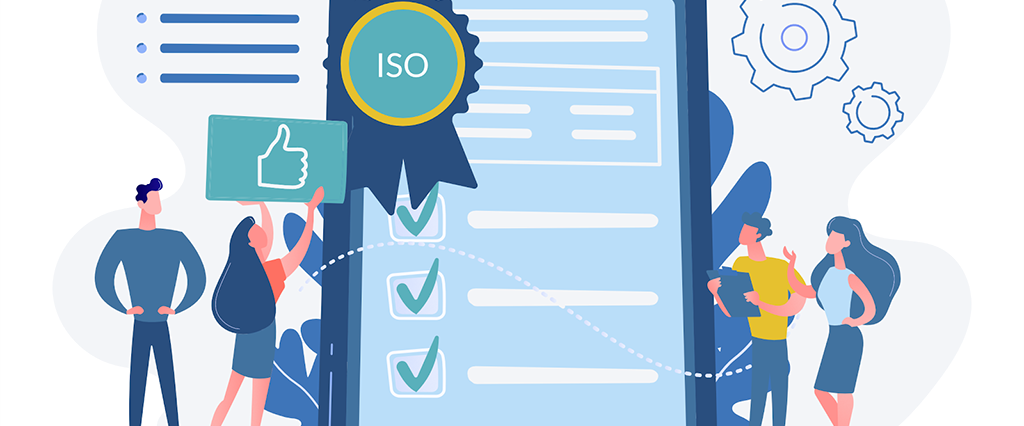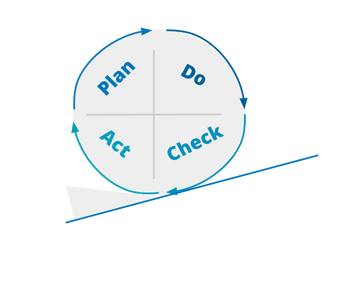
The QMS (Quality Management System) is necessary to guarantee the proper functioning of an organisation’s various processes. In the current COVID period, digitalisation guarantees performance and safety for all those involved in a process. Here are 3 essential reasons to go 100% digital.
What is a Quality Management System?
A QMS defines all the activities that a company must implement in order to achieve its quality goals, while respecting the quality policy established upstream. The QMS ensures process control, based on the principles of continuous improvement of results and performance. This system meets the ISO 9000 standards for quality management systems.
Stakeholders who commit themselves to a quality approach have various goals. Customer satisfaction seems to be the main motivation for setting up a QMS: it is a matter of satisfying and, above all, creating customer loyalty in order to ensure an optimal level of competitiveness.
QMS is also interesting for companies to control their quality process, via dedicated tools (like BlueKanGo for example).
3 key reasons to digitise your QMS
In 2021, it is essential to digitise it for 3 main reasons:
Reason n°1: Get an EDM accessible at any time and from anywhere (including telecommuting)
Electronic Document Management is the basis of your QMS. In fact, every organisation must have a well-operating document system as part of its quality process. The goal is to formalise practices to improve the company's performance. During these times of health crisis and telecommuting, employees need access to all their Quality documents (protocols, notes, etc...) to continue their activity.
The EDM is also an essential solution for managing the distribution of documents and to ensure that users have access to the latest versions of their documents. Thanks to the EDM, it is possible to manage the life cycle (writer/verifier/approver) of all documents, while having the possibility of consulting the history of all the modifications made.
(To go further, I invite you to consult our article: Document Management and ISO 9001 v2015: How to get started? )
Reason n°2: Simplify the implementation of PDCA
PDCA is a theoretical concept, based on the notion of a cycle applied repeatedly in four stages: Plan, Do, Check, Act. The action plan, implemented in the first "Plan" stage, is widely used in companies. It is used as a tool for planning the key actions to be implemented.

Thanks to dedicated solutions, it is possible to correlate the different Quality/EHS applications directly to the Action Plan. For example, during a field audit, when a non-compliance is identified with an associated action, it will be implemented automatically in the Global Action Plan. Also, the concerned person/department will be automatically notified by e-mail of this new action.
Thus, digital technology allows Quality/EHS managers and staff to gain in efficiency by avoiding multiple transcriptions from one Excel file to another.
Reason n°3: Optimise your management review
The management review is a requirement of several ISO standards. It consists of an annual or even half-yearly meeting, depending on the internal/external context of the company. The purpose of management review is to provide management with an overall assessment of the Quality/EHS approach and to discuss the effectiveness of the Quality/EHS management system. The goal is to take any necessary decisions.
This can be a source of stress for the Quality/EHS manager, who must ensure that they present relevant data to the top management.
But don't panic, it is now possible to use dedicated tools to perform statistical data analysis via automated dashboards. Integrated business intelligence (BI) tools, such as the one provided by BlueKanGo, generate attractive reports and charts.
At the same time, Quality/EHS managers and top management have real-time access to data from the field and are alerted directly by email of any drift in one or more indicators. Strategic decisions are thus taken quickly, limiting the number of meetings and, if necessary, can be made by videoconference.
In addition to the management review, these statistical tools are used in daily debriefings with production, or during the safety round in the field.
Thus, the digitisation of the QMS makes it possible to ensure the relevance and effectiveness of companies' quality procedures. In order to function correctly, this management system must be established according to a methodology that can be understood by all the concerned actors.
. . .





.jpg?width=169&name=unnamed%20(22).jpg)
